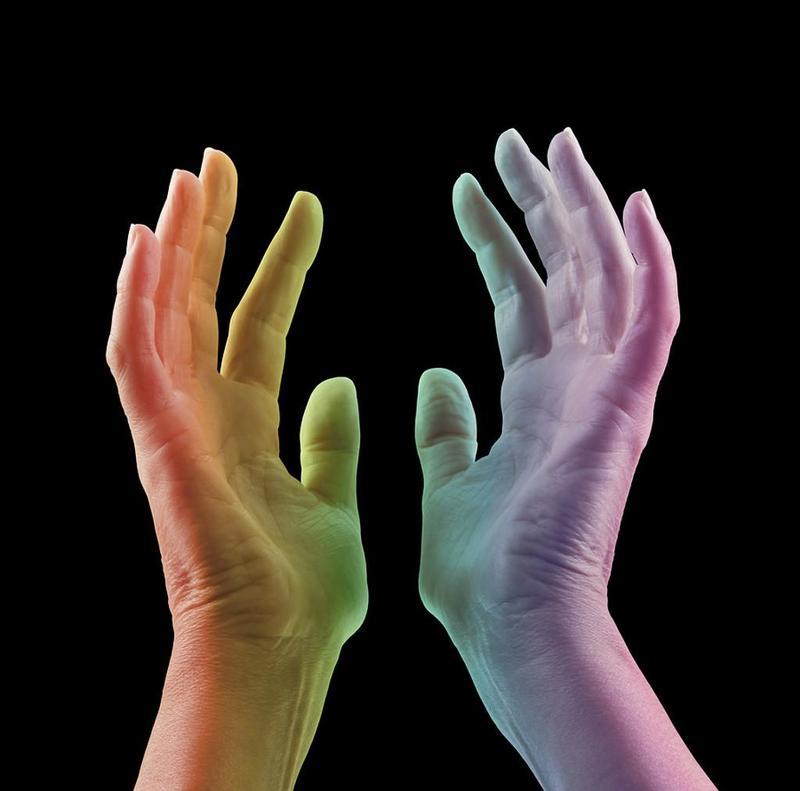How Color Therapy Can Fight “The Blues”
How Color Therapy Can Fight “The Blues”
Could a simple change in hue affect your health? According to age-old techniques collectively known as color therapy, color can indeed lift your mood — and more.
Color therapy, also known as chromotherapy, refers to the practice of using color and light to restore balance, peace of mind and good health. “It is an important alternative healing method because it works and it’s readily available,” said Eleyne-Mari Austen-Sharp, a certified color therapist and director of the Aura House School of Color and Light in Newport, R.I.
Exposing patients to various colors through light in order to treat psychological and physiological afflictions has roots in ancient cultures in regions such as China, India and Egypt, where patients would sit in solariums with varying colors of glass. Sunlight passing through the glass would flood patients with colors selected for their individual therapeutic benefits. India’s ancient system of Ayurvedic medicine—an holistic approach to caring for the body that addresses mind, body and spirit—also refers to using colors to treat various afflictions, with belief that different colors have different healing powers.
The colors of the rainbow are typically thought to produce the following effects:
Red: Energizes, empowers, stimulates circulation
Blue: Soothes, cools and calms, cultivates logical thought
Yellow: Motivates, promotes clarity of mind and communication
Green: Promotes freshness and harmony, has a stabilizing effect
Orange: Enables courage, vitality, intelligence
Purple/Violet: Helps boost confidence, inspiration, balances nervous system
White: All colors in one; optimal for healing and spiritual awareness
Today’s color therapists use contemporary tools, from colored scarves and glass bottles to colored gemstones, tinted lighting, even colored foods, to treat depression, anxiety, even effects of stroke.
“Blue is a calming color, which is ideal for anxiety,” said Austen-Sharp. “Green balances us, renewing our bodies with good health. Yellow helps us stay alert and confident. Red activates us with energy. People who suffer from depression feel more optimistic with yellow and friendlier with orange. Pink represents self-love, which I feel we all need to embrace if we wish to truly heal.”
Most of us don’t realize that we have been using color therapy our entire lives, according to Austen-Sharp. Whether it’s our food, furnishings, clothing or toothbrush, all of our color choices are meant to make us feel better. “Even if you have absolutely nothing colorful in your immediate surroundings, you can use your mind and intention to visualize the color you need and breathe that color into a particular area you wish to heal. You can practice color breathing anywhere.”
Sounds simple enough, but is there any proof that color therapy works?
“The real opportunity for color is to link the emotional or behavioral attribute you are seeking to the right color ,” said Leslie Harrington, Principle at LH Color, a color consulting company in Old Greenwich, Conn.
Harrington, who provides color strategy for companies around the world, explained that humans experience color through a series of filters. These include physiological, or innate, reactions to color but also learned associations according to their own cultures and experiences. Relationships with colors on an individual basis, she said, can be complex.
That said, there is a growing body of research to suggest that certain colors consistently affect behavior in predictable ways, for instance, red and orange stimulate and energize, while blue and green are calming. Some colors, like yellow, can indeed be uplifting but take more energy to process physically, so may need to be taken in “small doses.”
In a work space, it can be useful, then, to use blues and greens to achieve higher levels of concentration and focus; red and orange for brainstorming and socializing, and yellow for innovating and intellectual thinking, but, she said, the whole environment needs examining. Windows and natural light, sound, furnishings, all are factors in the outcome.
Barbara Odil, an accomplished artist who runs creativity workshops in Athens, Georgia, uses approaches learned in her color therapy training to help participants become aware of their “chakras” and the levels of intensity of the colors they possess. These seven spiritual centers of the body have been associated throughout history with specific colors; when one area is “low” another may be “high” and being aware of the imbalance empowers the individual to move to work toward restoring order, she said.
Connecting with, opening and balancing the chakras helps each person to operate at their optimal level of energy and health. She agrees that the journey is defined and developed on an individual basis. “Each person has their own potential, their own wisdom and sense of purpose, whether they are aware of it or not,” she said. “I just help them to reconnect with it.”
The ways color affect individuals may have its variations, but the message is clear: color is an accessible tool with easy-to-try, approachable applications, from changing your walls to changing your clothes. “I have a mantra,” said Austen-Sharp. “Change your colors, and you change your world!”
by Shannon Peavey For Yahoo
Be the first to post a message!
